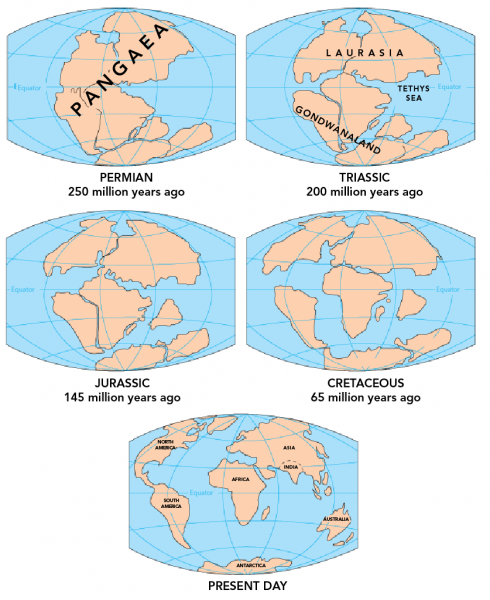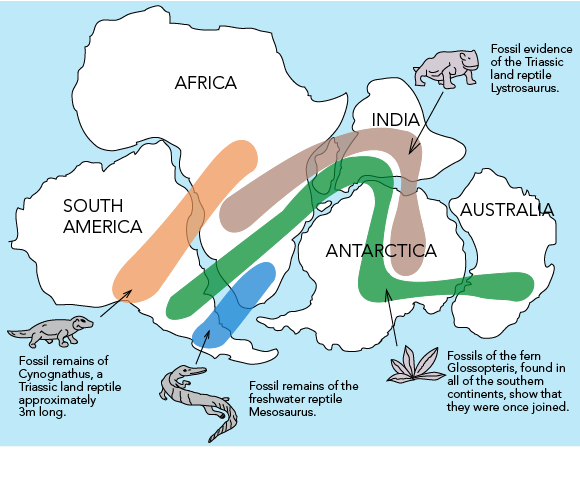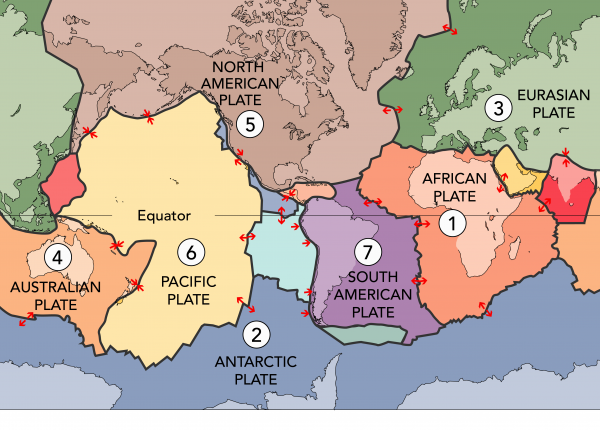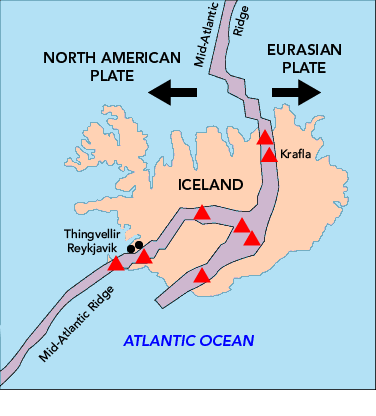Which is the Best Evidence That Continental Plates Continue to Move
Continental Drift and Plate Tectonics
Himalayan mountains (David Mark, Pixabay)
Himalayan mountains (David Mark, Pixabay)
How does this align with my curriculum?
Learn about the Theories of Continental Drift and Plate Tectonics and discover what happens when plates collide!
Continental Drift
Today, most people know that landmasses on Earth move around, but people haven't always believed this. It wasn't until the early 20th century that German scientistAlfred Wegener put forth the idea that the Earth's continents were drifting. He called this movementContinental Drift. He was not the first or only person to think this, but he was the first to talk about the idea publicly.
Wegener came up with this idea because he noticed that the coasts of western Africa and eastern South America looked like puzzle pieces, which might have once fit together and then drifted apart. Looking at all of the continents he theorized that they had once been joined together as asupercontinent(which was later calledPangaea) around225 million years ago (see Figure 4). The name Pangaea comes from the Ancient Greek words "pan," meaningentire, and "Gaia," meaningEarth. Pangaea is not the only supercontinent believed to have existed. Older supercontinents are also believed to have come before Pangaea.
The idea of moving landmasses seems obvious now, but Wegener'sTheory of Continental Drift(as he called it) was not accepted for many years. Why? Well, for one thing, Wegener did not have a convincing explanation for the cause of the drifting (he suggested that the continents were moving around due to the Earth's rotation, which later turned out to be wrong). Secondly, he was ameteorologist (someone who studies weather), not a geologist, so geologists didn't think he knew what he was talking about.
Fossil Evidence
One type of evidence that strongly supported the Theory of Continental Drift is thefossilrecord. Fossils of similar types of plants and animals in rocks of a similar age have been found on the shores of different continents, suggesting that the continents were once joined. For example, fossils ofMesosaurus, a freshwaterreptile, have been found both in Brazil and western Africa. Also, fossils of the land reptileLystrosaurus have been found in rocks of the same age in Africa, India and Antarctica.
Plate Tectonics
TheTheory of Plate Tectonicsbuilds on Wegener's Theory of Continental Drift. In the Theory of Plate Tectonics, it is tectonic plates, rather than continents, which are moving.
Tectonic plates are pieces of the lithosphere and crust, which float on the asthenosphere. There are currentlysevenplates that make up most of the continents and the Pacific Ocean. They are:
- African Plate
- Antarctic Plate
- Eurasian Plate
- Indo-Australian Plate
- North American Plate
- Pacific Plate
- South American Plate
There are eight other smallersecondary platesas well as many othermicroplateswhich do not make up significant amounts of landmass. Tectonic plates not only move land masses (continental crust), but also oceans (ocean crust). Since the plates are floating on liquid rock, they are constantly moving and bumping against each other. This means that the sizes and positions of these plates change over time.
Tectonic plates are able to move because the lithosphere, which makes up the plates, has a higher strength and lower density than the underlying asthenosphere. The solid plates above move along on the liquid rock below. You may imagine that these plates are zipping along, but in fact, they are moving VERY SLOWLY! The speed of the plates ranges from a typical 10–40 mm/year (about as fast as fingernails grow) to as fast as 160 mm/year (about as fast as hair grows). Geologists came to accept the Theory of Plate Tectonics in the late 1950s and early 1960s after coming to understand the concept ofseafloor spreading. Seafloor spreading occurs on the seafloor where oceanic plates are moving away from each other (diverging). When this happens, cracks occur in the lithosphere, which allows (hot liquid rock) to rise and cool, forming a new seafloor. The opposite of divergence isconvergence. This occurs when plates are moving towards each other. Material may push upwards (obduction) forming mountains or downwards (subduction) into the mantle. The material lost through subduction is roughly balanced by the formation of new (oceanic) crust by seafloor spreading.
Volcanic eruptionsand earthquakescan occur andmountains andocean trenchescan be formed whentectonic platesmeet. Let's look at some of these processes in more detail.
Mountains and Volcanoes
What do mountains and volcanoes have in common? They are both large, steep landforms made of rock that are formed when tectonic plates are pushed and pulled. Whether you getmountains orvolcanoes depends on the type of tectonic plates and where they are colliding.
To understand whether you will get mountains or volcanoes, you need to remember two things.
- There are two major types of tectonic plates: oceanic and continental.
- Oceanic plates are denser than continental plates.
Let's look at how tectonic plates form mountains and volcanoes.
- Whentwo oceanic platesdiverge (pull apart), underseavolcanoes are formed. Volcanoes are caused by cracks in the Earth's crust. An example of this is theMid-Atlantic Ridge, which extends from the Arctic Ocean to beyond the southern tip of Africa. There are so many volcanoes in the Mid-Atlantic Ridge, and they are so large, that it is considered the longest mountain range in the world.Iceland is located on this ridge. The red triangles on the picture show where there are active volcanoes.
- Whentwo continental plates converge on land (collide into each other),mountains are formed. This is because both of the plates, which are similarly dense, will push up against each other, causing the rock to get all folded and bunched up. The crust in the region of a mountain is thicker than the surrounding crust. TheHimalayan Mountainsare the result of this type of process.
Iceland is located on the Mid-Atlantic Ridge (Source: Let's Talk Science using an image by USGS [Public domain] via Wikimedia Commons). - When anoceanic plate (1) converges with acontinental plate(2), the oceanic plate will move under the continental plate (subduction) because it is denser(3). The oceanic plate may go deep enough under the continental plate and into the mantle that it melts and formsmagma(4). Increased pressure from beneath the Earth can build up and cause the magma to seep up through weak spots in the crust(5). Magma under high pressure sometimes comes through volcanic vents in the form of flowinglava, forming avolcanic cone (6).
Source: https://letstalkscience.ca/educational-resources/backgrounders/continental-drift-and-plate-tectonics#:~:text=Fossil%20Evidence,the%20continents%20were%20once%20joined.





0 Response to "Which is the Best Evidence That Continental Plates Continue to Move"
Post a Comment